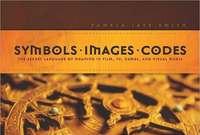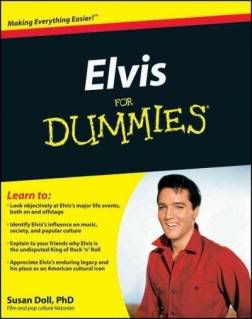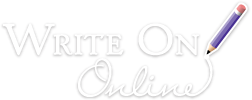Pamela Jaye Smith is a writer, mythologist, international consultant and speaker, and award-winning producer and director. Her latest book—Symbols.Images.Codes – The Secret Language of Meaning in Film, TV, Games, and Visual Media—was recent released by Michael Wiese Productions. The founder of MYTHWORKS and co-founder of the Alpha Babe Academy, Smith is also the author of Inner Drives, The Power of the Dark Side, and Beyond the Hero’s Journey.
She is currently writing another book for media makers called, SHOW ME THE LOVE! Create and Enhance the Passion in Your Stories, as well as a novel about a group of people living multiple lives in different times and places—some aware of their other lives, some not—all engaged in an ongoing contest for the very soul of humanity. Smith will be a speaker at the Death & Transformation Conference in LA in October and at the 10Day/10Minute Film Festival in Beirut, Lebanon, this November.
Why did you write Symbols * Images * Codes?
Humans communicate in so many ways: verbal, visual, by touch and feel, smell.
As a mythologist also very interested in history, it struck me that a lot of what we know about the distant past has come down through the images painted on rocks, carved on bone, engraved in metal, or molded into the decor of sacred sites. Not only do symbols convey cultural particulars—stained glass windows of cathedrals portrayed Bible stories for the then mostly illiterate congregations, hieroglyphs on Egyptian tombs gave instructions from making beer and bread to navigating the afterlife, and stone carvings on Mayan temples recorded the passage of time and sacrifices of enemy hearts—but these visual communication devices also strike resonant chords deep within us. Something instinctual, something hard-wired in our brains, gives symbols their timeless potency.
The more consciously we writers use symbols to convey meaning and emotion, the richer our stories will be. A well-chosen symbol can transform a phrase into a world of meaning.
What was your process for writing Symbols*Images*Codes? Any similarities/differences between this and your other books?
First, I made a long list of as many categories of symbols, from the standard earth-air-water-fire to the more esoteric. Then came the painful task of paring it down to fit the page count.
Similar to my other books was the drive to make the information fresh and inspiring, yet practical. I love weaving mythology and metaphysics into the art and craft of writing: tying it in with examples from real life and current affairs makes it solid, giving examples from entertainment shows how writers can enrich their own work with these classic story-telling tools.
The delightful difference was that for SYMBOLS I could put actual images on the page to illustrate the various concepts.
Find your own best bio-rhythm time and try to set aside at least two-hour chunks of time devoted just to writing. Unless I’m writing on assignment (and thus paid to do so) I try to spend 6 to 10 hours a week on a project in between doing all the other things my business requires. That may mean getting up earlier in the mornings, or setting aside an entire day on the weekend just for writing. Using a timer and working in 30-minute increments with a little break every hour also helps discipline the time and focus.
What was your favorite part of writing the book? The greatest challenge?
Favorite part—watching lots of movies to find just the perfect example for each symbol, image, etc. How fortunate we writers are in that reading, watching films, observing others, conversing, and just sitting and thinking can all be called “work!”
Greatest challenge—confining myself to the allowed number of pages and words. I’d love to have written a much longer book as the world of symbols and images is so rich with examples from thousands of years and hundreds of cultures.
How important is symbolism in non-fiction? Fiction? Video games? Etc…
Symbolism can strengthen any communication in any style. Some might question whether advertising is non-fiction, but the power of symbols used to market products, services, and politicians is unquestionable. Just watch Mad Men or look at the covers of popular business and self-help books. Campaign posters are a great study in symbolism.
Symbolism and imagery are so often the entire fabric of poetry. The more we can use them in our prose, the more evocative and powerful it can be. The most universal and timeless stories are typically filled with symbols that span eons and cultures: from Juliet’s uplifted and separate balcony to young Arthur pulling that sword out of the stone, from Indiana Jones stepping out into mid-air in his Leap of Faith in Last Crusade to the water imagery of I’ve Loved You So Long.
Video games are packed with symbolism, from the initiation-like levels of a game to the acquisition of skills, tools, and weapons. Many games are set in fantasy worlds where visual shorthand conveys character personality and abilities. The options available when building an avatar are typically rich in symbolism, from hair styles to accessories conveying rebellion, wisdom, craftiness, and much more.
The more ways you can convey your message—visual, verbal, etc.—the more effective it will be.
What are the top three things a writer needs to know about incorporating symbolism into their projects?
Carefully select your major symbol so it can speak to at least two of these three levels: physical, psychological, philosophical. E.g. the full moon brightens the nighttime forest (physical), brings out the werewolf part of a character (psychological and physical), and implies a distance from and dilution of the purity and clarity of sunlight (philosophical and psychological).
Use the symbol at least three times, preferably in relation to an emotion, a situation, or a concept. All three if your story expands that deeply.
Symbols, images, and codes are only effective when they are appropriately presented, framed, focused upon, and noticed (or not, if that’s part of the plot) by your characters. In prose use the tools of speech such as metaphors, similes, synecdoches, etc In scripts use visual composition to draw the viewer’s attention: “he throws his arms out, like on a cross” or “holding back tears, she moves to stand near the fountain.”
What are the main mistakes writers make in that area?
Being too obvious, too heavy-handed. You want the reader/viewer to feel smart for having discovered it, not roll their eyes because you’ve pointed giant neon arrows to it.
Using the same symbol so often as to lose its “aha!” impact.
Being too obscure, thinking everyone will get it. If you’re using a symbol that needs explaining, have a character do so at some point early in the story or do so in the prose if you’re writing in 3rd person omniscient.
How do you balance all the aspects of your career?
With some difficulty … don’t we all?
From the Mystery School training comes the concept of our four bodies: physical, emotional, mental, and creative/spiritual. Seeing that each body gets some nourishment and exercise each day really helps, be it good food and some walking or swimming, visiting friends or watching a movie, reading science articles or non-fiction and doing brain-train exercises, and meditating or attending an inspiring event. The best writing comes when all four bodies are engaged.
Pull up the drawbridge. No matter how brilliant we naturally are, effective composition requires focus and concentration. When you’re writing, just write. Don’t check emails or texts, don’t answer the phone, don’t cruise the internet. Sure, sometimes we need to research online, but do set aside private time with just you and what you’re writing. It may mean taking a laptop with no wi-fi connection into another room to get the privacy you need. It probably means training your friends and family that just because it doesn’t look like you’re doing anything, you really are working and need quiet and solitude.
Marketing is the most difficult part for me as I’d rather just be writing, teaching, or gathering new info and insights to do more writing. We are all so very fortunate these days however, with so many easy and inexpensive ways to market our services and products online, particularly in social and professional networks.
Additional advice for non-fiction book writers?
What emotion do you want to elicit in your readers? Curiosity, engagement, outrage, ambition, sympathy, etc.? Select one main symbol that conveys that emotion and give examples, stories, or case histories to relate to it on at least three levels: emotional, situational, conceptual. [The Symbols book index is arranged to help you do this.]
Use the symbol in illustrative ways: climb the corporate ladder, lean the ladder up against the walls, put the ladder horizontally between two stable supports and use it as an exercise machine, etc.
Design your book cover with a symbol that captures your message. E.g. my Inner Drives book about using the chakras to build story characters shows a naked body holding an apple—symbol of temptation and all sorts of tasty and dangerous drives. The Power of the Dark Side shows a snake slithering out over dark water. This newest one on Symbols has what looks like a secret decoding device, slightly blurry around the edges and implying secrecy and treasure.
Additional advice for screenwriters?
For scripts to be sold and turned into a visual medium, you must first impress a studio development exec or production company reader with words on a page. Make your pages incredibly more powerful using potent, visceral words that create vivid images.
The more you work images and symbolism into your stories the better. Two excellent examples are Lawrence of Arabia (earth/sand, open spaces, and superb composition) and I’ve Loved You So Long (water and confinement).
What do you know now that you wish you knew at the beginning of your career?
1. That absolutely every experience counts—no matter how seemingly mundane, annoying, scary, or secret—because it can all be turned into literature.
2. Always carry a recording device [pen and paper, texting device, voice recorder, ketchup and a paper napkin, etc.] because the most strikingly brilliant ideas can also be quite elusive. How many of your own have slipped away into the oosphere because you didn’t get them down quickly enough?
3. The timeless classic stories need retelling for every generation and are a rich mine for inspiration. By giving them our own personal perspective and spin we can bring their wisdom and enchantment to our own readers and viewers in unique and entertaining ways.
Tags: Beyond the Hero's Journey Inner Drives Michael Wiese Productions Mythologist Pamela Jaye Smith Symbolism Symbols Images Codes The Power of the Dark Side












Comments are closed.
[…] Thanks to Michael Wiese Productions, we will have 4 winners. Each will choose one of the following books from MWP as their prize: 1. Byte-Sized Television by Ross Brown 2. Story Line by Jennifer Grisanti 3. Mind Your Business by Michele Wallerstein 4. Symbols * Images * Codes by Pamela Jaye Smith […]
[…] Thanks to Michael Wiese Productions, we will have 4 winners. Each will choose one of the following books from MWP as their prize: Byte-Sized Television by Ross Brown Story Line by Jennifer Grisanti Mind Your Business by Michele Wallerstein Symbols * Images * Codes by Pamela Jaye Smith […]
[…] Thanks to Michael Wiese Productions, we will have 4 winners. Each will choose one of the following books from MWP as their prize: 1. Byte-Sized Television by Ross Brown 2. Story Line by Jennifer Grisanti 3. Mind Your Business by Michele Wallerstein 4. Symbols * Images * Codes by Pamela Jaye Smith […]